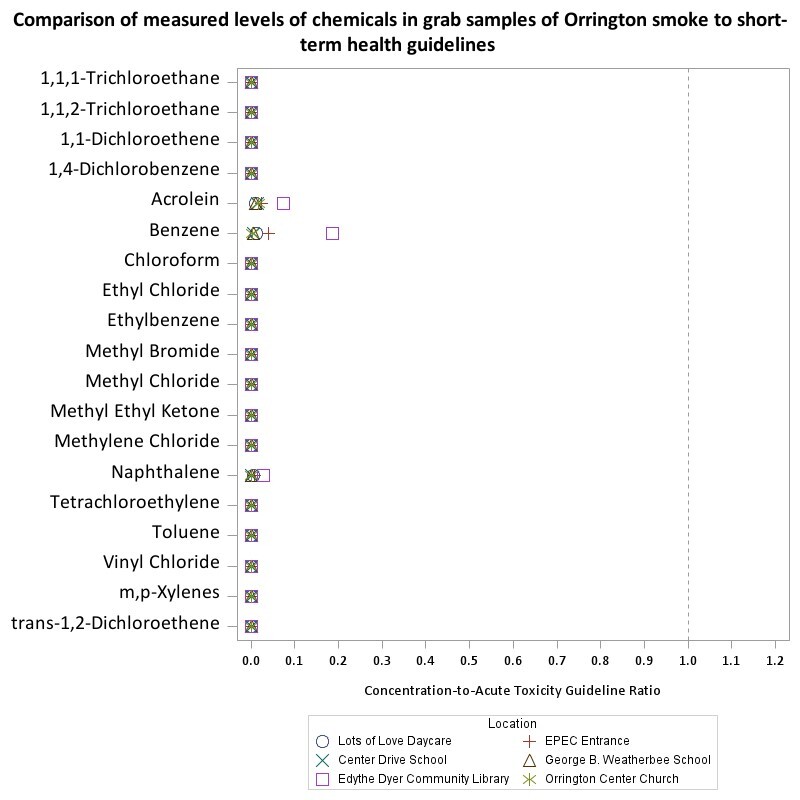DEP provides more details on air quality following the Orrington EPEC site fire
AUGUSTA, October 4, 2024 — The air quality forecast for particle pollution in the area of the fire today is “moderate,” meaning the air quality is acceptable. The ME DEP and ME CDC continue to closely monitor ambient particulate matter levels in the areas surrounding the Orrington fire. With low particulate matter detections by mid-morning and wind speeds expected to pick up, the air quality alert for yesterday, October 3, 2024, has been discontinued. The forecast has improved since yesterday’s “unhealthy for sensitive groups” forecast. The unhealthy for sensitive groups category means that while the general public is not likely to be affected, members of sensitive groups may experience health effects. (Sensitive groups include children, the elderly, and individuals suffering from respiratory or heart diseases such as asthma, bronchitis or COPD, and healthy adults who are exerting themselves.) Now that the air quality forecast is moderate, neither the general public nor these sensitive groups should be affected; however, there may still be a slight risk for those unusually sensitive to air pollution. If people smell smoke and have concerns, they can consider reducing prolonged or heavy exertion, and further reduce activity if they experience coughing or shortness of breath.
To provide a short-term health risk assessment from the smoke and emissions generated by the Orrington Eagle Point Energy Center fire, the Maine DEP collected several “grab air samples” from locations in the Orrington area where there was visible smoke and/or odor in the air. These grab air samples were analyzed by the Maine DEP for 47 individual chemicals to determine levels in the air people could breathe. These measured air levels were compared to available federal agency toxicity guidelines for levels in air that would pose minimal risk of any adverse health effect from short-term exposure, specifically a period of 1 to 14 days.
All of the measured levels of the 19 chemicals with short-term toxicity guidelines were well below these guidelines as evidenced by all of the ratios on the figure are well below 1. The figure below provides a quick summary of the results from this air testing. As toxicity guidelines differ a lot among different chemicals, a way to put all the chemicals on one figure is to show how each measured level of chemical compares to its own toxicity value. This comparison is made by computing the ratio of the measured level to the toxicity guideline. A ratio with a value of 1 (the dotted line) means the measured level is the same as the toxicity guideline. A ratio of less than 1 means the measured level is lower than the toxicity guideline and thus is unlikely to be of health concern. For example, the highest ratio found in performing these comparisons was 0.2 for the chemical benzene measured at the Edythe Dyer Community Library. This means the measured level of benzene was five-times lower than the toxicity guideline for benzene.
 On Oct 3, around 1000hrs the Responsible Party, in collaboration with the Fire Department, started separating the trash pile within the building. This change in response activity caused the DustTrak monitors to detect higher aerosol mass readings. However, there were no significant changes detected by the chemical specific sensors in the AreaRAEs. EPA on-scene coordinators determined that there is no evidence of hazardous materials burning within the trash pile. EPA demobilized all personnel and equipment on Oct 3 at approximately 1600hrs.
EPA will continue to support Maine DEP in its efforts to evaluate data from the state’s ambient air monitoring network and alert the public if there are concentrations that could exceed unhealthy levels of pollutants, like particulate matter.
Community members can see real-time particulate air quality data readily available at EPA’s Fire and Smoke Map. This resource shows air quality from moment to moment, at both regulatory air monitoring stations and non-regulatory air quality sensors. Community members can use this full information to make decisions about their activities.
Samples were taken Wednesday from the Penobscot river above the discharge in Bangor for background levels, at two locations below the discharge, and one directly from the discharge. The Department requested expedited processing of the samples. Due to lab volume, results may not be available for several days.
For the duration of the weekend, the DEP Response Division will be on call to assist the town of Orrington, the Orrington Fire Department, and the local Emergency Management Agency. The public is encouraged to contact the Orrington Fire Department at 207-825-3530 if they have concerns about the fire or fire management. In the event that no one is available to take the call in person, please leave a message, and someone will respond as soon as personnel are available.
Until the fire is extinguished, DEP Air Bureau staff will continue monitoring the air quality in the affected area.
For additional information, contact:
David R. Madore, Deputy Commissioner
|